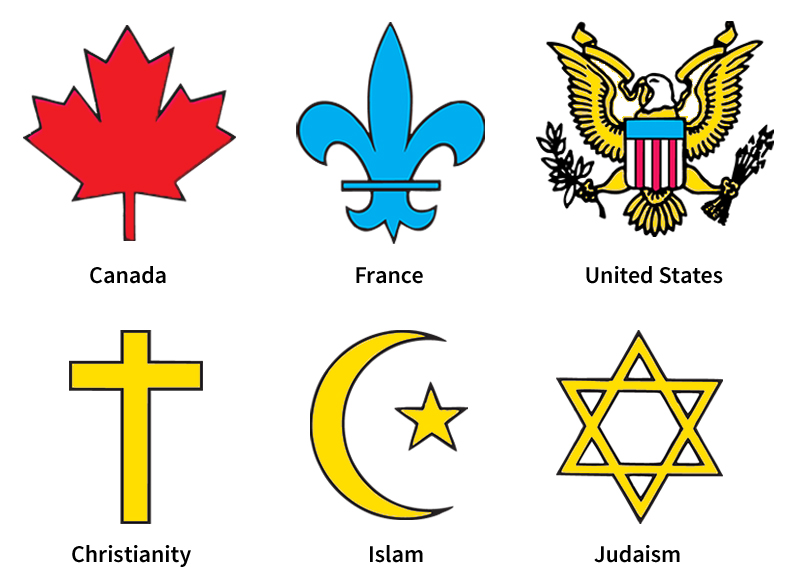Symbol, also called emblem, communicates a fact or an idea or stands for an object. Some symbols, such as flags and stop signs, are visual. Others, including music and spoken words, involve sounds. Symbols rank among our oldest and most basic inventions.
Almost anything can be a symbol. For example, the letters of the alphabet are among the most important symbols because they form the basis for almost all written and spoken communication. Gestures and sounds made by human beings also symbolize ideas or feelings. A symbol can be used alone or with other symbols.

Uses of symbols.
Individuals, nations, and organizations use symbols every day. Symbols also play an important part in religious life. People throughout the world have agreed on certain symbols that serve as a shorthand for recording and recalling information. Every branch of science, for example, has its own system of symbols. Astronomy uses a set of ancient symbols to identify the sun, the moon, the planets, and the stars. In mathematics, Greek letters and other symbols make up an abbreviated language. Other symbols appear in such fields as commerce, engineering, medicine, packaging, and transportation. Since the 1930’s, many nations have been working together to create a system of road and traffic signs that could be universally understood.
All countries have official or unofficial national symbols. A flag or an anthem may symbolize a nation. Familiar symbols of the United States include Uncle Sam and the Statue of Liberty. Symbols for other countries include the maple leaf for Canada, John Bull for England, and the fleur-de-lis for France. Many political parties use symbols for identification. In the United States, a donkey symbolizes the Democratic Party, and an elephant represents the Republican Party.
Most religions use symbols to represent their beliefs. The cross symbolizes Christ’s death and all Christian beliefs. The Star of David represents Jewish teachings.
Many rituals have a symbolic nature. Such symbolic acts include coronations, inaugurations, military salutes, and religious sacraments.
Symbols with different meanings.
Several societies may use the same symbols, but these symbols may stand for different things. In many societies, for example, the color red symbolizes war and violence. But this color also has other meanings. In China, red represents marriage. Among American Indians, it stands for the East. Red symbolizes life in the Shinto religion of Japan, but in France it represents law schools.
A symbol has only the meaning that people have given it. Even a powerful symbol can lose its meaning if the society dishonors or ignores it for a period of time. Throughout early history, many people considered the swastika a good luck charm. But in 1920, the Nazi Party of Germany adopted it as its symbol. The swastika came to represent the Nazi attempt to conquer Europe. Today, it ranks as one of the most hated symbols in history.
